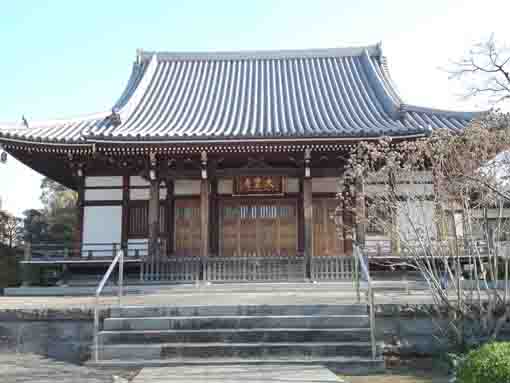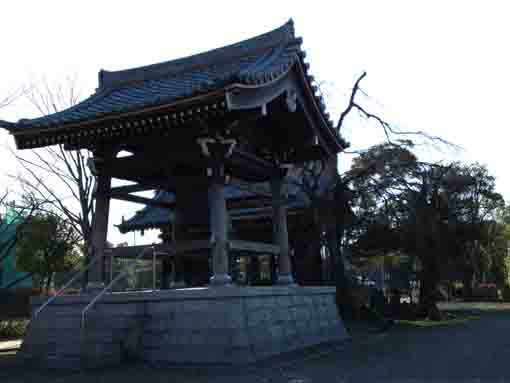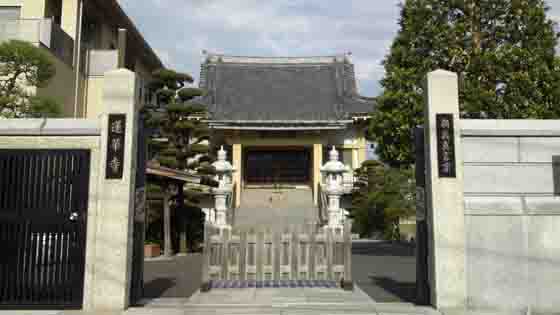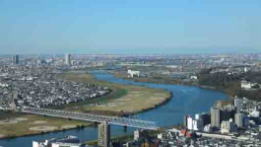Nakayama is in between Narita And Haneda International Airport
<クッキーについての同意並び欧州居住者向けプライバシーポリシー>
中山・下総・散歩道
Chogyosan Senshoin Daiunji Temple or Yakushadera






Yakushadera or Chogyosan Senshoin Daiunji Temple is a beautiful temple with deep green woods in the residential area in Mizue Edogawaku Tokyo. And the temple is famous for having many tombstones of Kabuki Actors such as the tombstone of Uzaemon Ichimura, Hikosaboro Bando, Koshiro Matsumoto, Kanzaboro Nakamura and so on, then it is called Yakushadera and many people believed it. Why don't you visit Yakushadera or Daiunji Temple?
Chogyosan Senshoin Daiunji Temple (Yakushadera)
Daiunji Temple
Daiunji Temple named Chogyosan Senshoin belonging to Jodo Shu. The venerable Bonnyo was given 10,000 square-meters land in Morita-cho (now Kuramae in Taitoku) by the Second Shogun of Edo Bakufu, Hidetada Tokugawa, and built Daiunji Teple in 1620. In 1668, it moved to Honjo Oshiage (now it is next to Narihira Park), finally it moved here in 1931. It is famous for the name 'Yakushadera' since it has many tombs of Kabuki Yakusha (actors) in its graveyard. The principle image of the temple is the statue of the seated Amida Nyorai.The Tombstones of Kabuki Actors registered as historic sites by Edogawaku in March 2006
①・The Tombstone of the Successive Generations of Uzaemon Ichimura(From the First to the Seventeenth Generation, the Thirteenth Generation is the Fifth Generetion of Kikuzaburo Onoe)
②・The Tombstone of the Successive Generations of Hikosaburo Bando
(From the Third to Seventh Generation)
③・The Tombstone of the Third Generation of Hikosaburo Bando's Family
④・The Tombstone of the First Generation of Kikugoro Onoe
⑤・The Memorial Stone Tablet built by the Students of Terashima Family
⑥・The Tombstone of the Students of Terashima Family
⑦・The Tombstone of the Successive Generations of Kikunojo Segawa
(From the First to the Sixth Generation and the First Generation of Nyoko Segawa, a scenario writer of Kabuki and Kyogen in Edo period)
⑧・The Tombstone of the Successive Generation of Koshiro Matsumoto
(From the Fourth to the Sixth Generation of Koshiro Matsumoto)
⑨・The Tombstone of the Successive Generation of Kanzaburo Matsumoto
(From the First to the Thirteenth Generation of Kanzaburo Matsumoto)
⑩・The Tombstone of the Third Generation of Kanzaburo Nakayama
⑪・The Tombstone of Fukuchi Family
⑫・The Tombstone of Hikosaburo Bando
(The First and Second Generation of Hikosaburo Bando)
The Tombstone of Koson Ikeda
⑬・Koson Ikeda (1801-66) was a painter in late Edo period. He studied at Hoitsu Sakai (1761-1828) belonging to Korin Group.平成20年3月
江戸川区教育委員会
長行山専称院大雲寺(役者寺)門前案内板より
引用、抜粋並びに参考
長行山専称院大雲寺(役者寺)
江戸川区ホームページ
ウィッキペデイァ
Fall in Daiunji Temple (Yakushadera)












Fall in Yakushadera (Daiunji Temple)
Some autumnal views that the buildings are covered with colored leaves in fall could be seen from the street along Yakushadera.The Access to Chogyosan Daiunji Temple (Yakushadera)
Chogyosan Senshoin Daiunji Temple (Yakushadera)

The map to the noted spots near Ichinoe Station
PDF of the map to the noted spots near Ichinoe Station- Chogyosan Senshoin Daiunji Temple (Yakushadera) has great accessibilities from both Narita and Haneda International Airport.
- From Narita International Airport, take Sobu Express Line bound to Tokyo or Yokosuka and get off at Funabashi Sta, then transfer the line to Sobu line bound to Nakano or Mitaka ang get off at Motoyawata Sta. Or take Keisei-line bound to Ueno and get off Keisei Yawata Sta. Both from Motoyawata Sta and Keisei Yawata Sta, transfer the line to Toei Shinjuku line and get off at Mizue Sta.
- From Haneda International Airport, take Keikyu-line bound to Narita, and get off Shinagawa Sta and transfer the line to Sobu Express line bound to Narita International Airport or Chiba, and transfer the line at Ichikawa Sta to Sob line bound to Nishi Funabashi, Tsudanuma or Chiba and get off at Motoyawata Sta. Or take Keikyu-line bound to Narita, and get off Keisei Yawata Sta. Both from Motoyawata Sta and Keisei Yawata Sta, transfer the line to Toei Shinjuku line and get off at Mizue Sta.
- From Iwamotocho Station at Akihabara, take Toei Shijuku line bound to Motoyawata and get off Mizue Sta.
- Take 9 minute walk from Mizue Sta.
- 4-11-5 Mizue, Edogawaku, Tokyo
The Noted Spots around Funabori, Ichinoe and Kasai

The Observatory on Tower Hall Funabori
Visitors could enjoy seeing some special views of Tokyo.
A Walk Along Shinkawa River
There are some Edo style, some wooden buildings and thousands of cherry trees along the river.
Thousands of Cherry Trees along Shinkawa River
In spring, thousands of sakura along it beautifully bloom.
Shinkawa Nishi Suimon Hiroba Plaza
There are a Edo style fire lookout and an old lock gate in the plaza.
Furukawa Water Park
It is the first water park in Japan and a famous spot for viewing Sakura and hydrangeas.
Honkakusan Myoshoji Temple
There are some seasonal flowers blooming in every season, sakura especially blooms beautifully.
Ninoe Jinja Shrine
There are several tall pine trees and a 500 years old giant zelkova tree in the shrine.
Kaishosan Rengeji Temple
The principle image is the statue of Sho Kanzeon Bosatsu carved by Gyoki.
Kumano Jinja Shrine
There is a stone tablet scribing a haiku poem written by Basho Matsuo.
The Remain of the Ferry at Imai
The ferryport at Imai is appeared on an essey written by Socho, a renga poet in Muromachi period.
Ichinoe Sakaigawa Water Park
The park has many sakura and seasonal flowers, visitors could enjoy all seasons.
Iousan Myouonji Temple
It has the legend 'the One-eyed Crucial Carps' telling the miracle power to cure eye disease.
Ichinoe Makkotei Residence Park
In spring, weeping cherry trees bloom, in fall, colored leaves decorate the garden.
The Residence of Ichinoe Nanushi Yashiki
The traditional Japanese style residence with a thatched roof.
Honkosan Joryuji Temple
It is an important temple to know the history of Ichinoe area.
Chogyosan Daiunji Temple
It has tombs of Kabuki Yakusha and it is called Yakushadera.
A Walk Along Edogawa River
The areas along the river have many noted spots that people could enjoy history and culture.
A Walk Along Shinnakagawa River
There are some historical and cultural spots along the river.- 広告 Advertisement -
